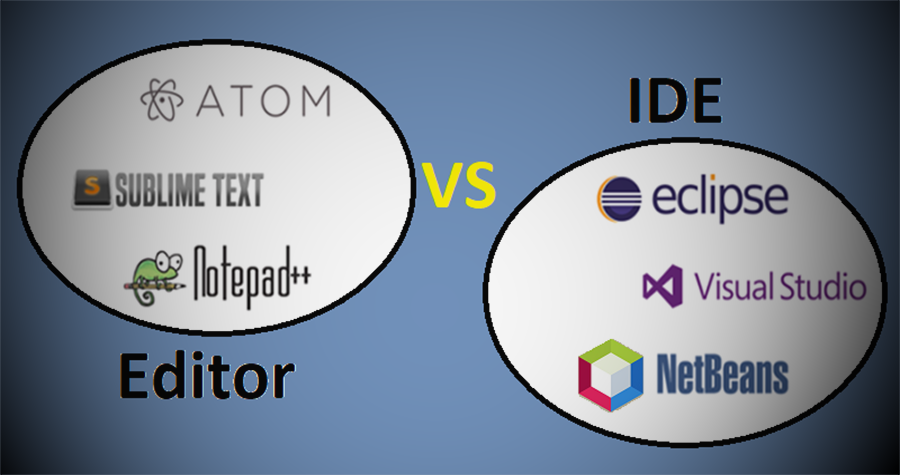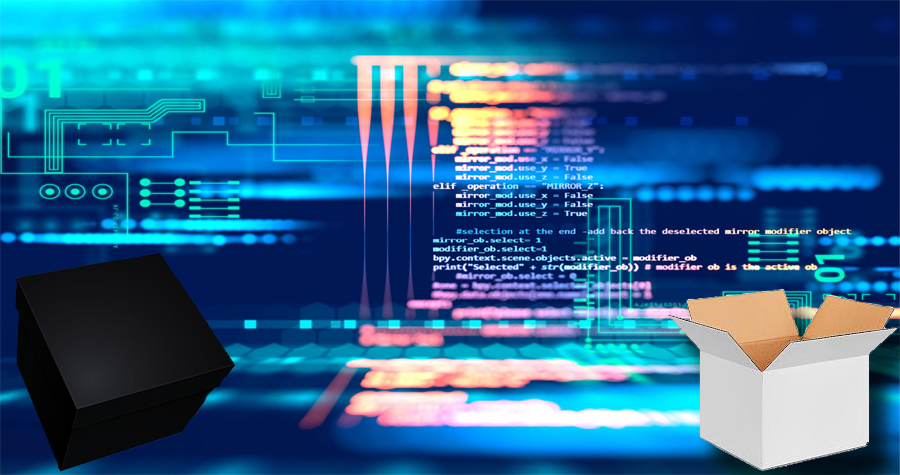To program or develop software, it is required to write code in one or more languages. These may or may not be programming languages. As a general rule, you will almost always write in some language, no matter what tool is used, whether a text editor, a code editor or an IDE. In the end the result will be the same, although depending on the tool selected for To this end, the development process can be more efficient or more laborious. Below are some examples of languages that are used during software development:
- Programming Languages (Assembler or ASM, C, C++, Pascal, Java, C#, Python, PHP, JavaScript, Ruby, Perl, Go)
- Markup languages (XML, HTML, XHTML)
- Style languages (CSS)
- Information exchange languages (XML, JSON, YML)
- Database query languages (SQL, DQL)
- Scripting languages or Shell scripts (batch on Windows, bash on Linux)
Code editors
A code editor is a text editor with some functions aimed at editing code. These are characterized by being very light and allowing their functionalities to be expanded through plugins, some of the most popular are:
- Visual Studio Code (VSCode), https://code.visualstudio.com/
- SublimeText, https://www.sublimetext.com/
- Notepad++, https://notepad-plus-plus.org/downloads/
- VIM, https://www.vim.org/download.php
Many mainly expert programmers use them a lot, so using code editors is considered something that demonstrates advanced knowledge. This is a very popular myth in our times, but it does not mean that experts do not use professional IDEs.
You can use a code editor, but in most cases it will require extra fine-tuning work to turn it into a good tool to develop more comfortably, based on our objectives as developers.
On the other hand, there are the IDEs, which we will discuss below.
IDE (Integrated Development Environment) Integrated development environment
An IDE is a specialized software or set of applications focused on development tasks that include all the necessary tools to facilitate the development, testing, and deployment of what is being developed. There are some that are capable of managing several languages and others focused on a single language and specialized in it. Generally, IDEs take a few seconds longer to load and consume a little more hardware resources, depending on how many projects we have opened and the functionalities that are being used.
An IDE saves time and effort because it integrates many functions that will help you develop more efficiently, generally almost all IDEs include the following features:
- Project management.
- Integration of tools (compilers, linkers, interpreters, dependency managers, debuggers, packagers, etc., depending on the language used)
- Syntax highlighting during editing (marking reserved words so you know they are spelled correctly or if you are missing something)
- Advanced Code Editor (Like a code editor, but with superior features like line numbering, multi-line and multi-place editing, ability to expand and collapse code blocks, add markers and breakpoints)
- Verification of syntax and semantics of the code (analyzes the code before passing it to the compiler or interpreter, verifying its syntax and whether its use is correct according to the scope in which it is located)
- Handling of automatic or manual character encoding or conversions (UTF-8, ASCCI) you can even specify the type of character encoding desired for the files to be saved.
- Code autocompletion, keeps track of constants, variables, functions, parameters, files, classes, types, etc. Anything you type to save you having to type it again is usually displayed automatically, although there are IDEs where you can call it whenever you want.
- They integrate debuggers to detect errors, etc. at runtime.
- They integrate version control systems (CSV, SVN, GIT) that are very important for teamwork and for good documentation and change management during the development process.
- Automatic saving of changes and the possibility of undoing with quite large limits even up to 1000 or more, so you can use Ctrl+Z many times even to return to the creation of the file.
- They can include Frameworks to perform automated software testing
- They integrate Help at programming time on the functions or classes you use
- Integration of tools for software packaging, compression, digital signature, etc.
- Management of multiple programming languages, Frameworks, libraries, etc.
- Code generation, files, classes, methods, constructors
- Automatic file or library inclusion management
- Refactoring across the entire project, specific files, or blocks of code
- Presence of assistants for specific tasks, generating classes, connections to databases, etc.
- Automated documentation management tools. Generate project documentation.
And if all these functions were not enough, most IDEs support plugins to expand their functionalities.
Some examples of the most used IDEs
- Eclipse (C, C++, Java, HTML, CSS, JavaScript, PHP), https://www.eclipse.org/downloads/
- NetBeans (C, C++, Java, Python, HTML, CSS, JavaScript), https://netbeans.apache.org/download/
- Microsoft Visual Studio (C, C++, C#), https://visualstudio.microsoft.com/es/downloads/
- Rad Studio, (C, C++, Delphi) https://www.embarcadero.com/es/products/rad-studio/downloads
- PHP Strong (PHP, HTML, CSS, JavaScript), https://www.jetbrains.com/es-es/phpstorm/download/
- Code Block (C, C++), https://www.fosshub.com/Code-Blocks.html
Our recommendation to you, dear reader, is that when programming you choose the tool with which you feel most comfortable. But keep in mind that by using an IDE and mastering its functionalities, you will be more productive in software projects. That doesn’t mean you can’t use an editor for something quick or one day do some complex project in it. If you have a good computer, don’t skimp on using its resources to develop using a good IDE.
Finally, we leave you in the following video a more detailed explanation about the comparison between Editors and IDEs, from an expert in professional web development.






